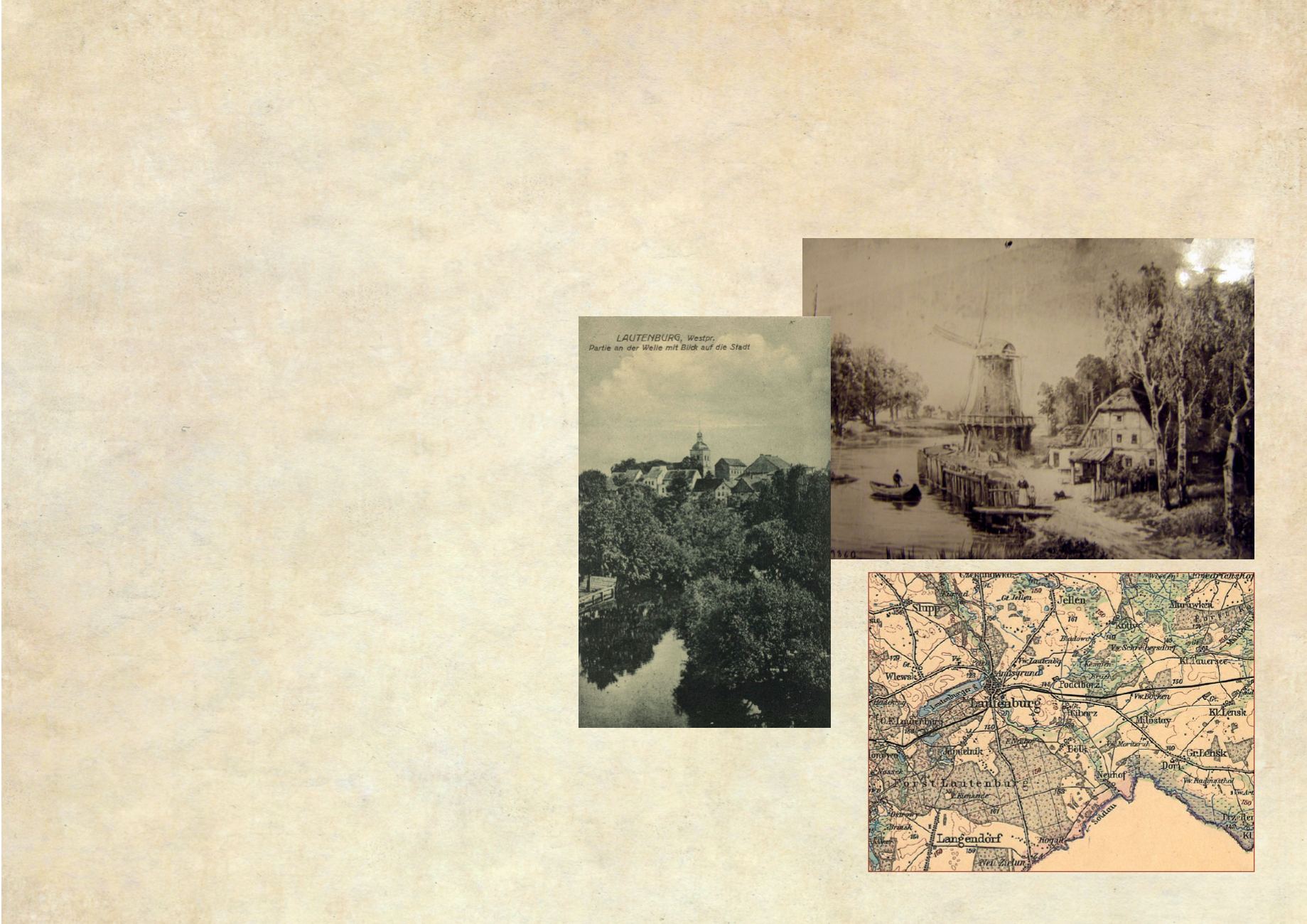
nad rzeką wel
R
zeka Wel pod względem historycznym wciąż budzi wiele zaintereso-
wań ze strony znawców przedmiotu. Istnieją bowiem przesłanki, iż na
początku XIV wieku Krzyżacy przeprowadzili znaczne prace hydrotech-
niczne prowadzące do nowego „działu wód”. Rzeka Wel pierwotnie miała
być niewielkim strumykiem, biorącym swój początek w okolicach Bełku.
Wkra natomiast płynęła dzisiejszym korytem Welu do Ciborza i dalej do
Nowego Dworu.
Trudne i kosztowne prace hydrotechniczne służyć miały poprawie ko-
munikacji i handlu. W połowie XIV w. Krzyżacy doszli do wniosku, że
zamiast transportować łodzie i towary na przewłokach, przenosić oraz
przeciągać na płozach i ułożonych w tym celu balach, łatwiej i w sumie
taniej będzie, jeżeli przekopią kanał od Wkry do niewielkiej rzeczki Wel,
płynącej do Jeziora Lidzbarskiego i dalej do Drwęcy. Kanał ten o długości
ok. 3-4 km początek swój miał wziąć w połowie drogi z Ciborza do Bełku.
Tak górny bieg Wkry stał się górnym biegiem Welu, a pozostałość po sta-
rym korycie Wkry stanowi strumyk zwany Martwicą. Niektórzy historycy
i geografowie powątpiewają w istnienie kanału. Zbyt dużo jednak prze-
mawia na jego korzyść.
on the river wel
T
he River Wel is, historically, still a subject of interest among many ex-
perts. Indeed, there are indications that at the beginning of the four-
teenth century Teutonic Knights carried hydro technical works leading to
a new “watershed“. The RiverWel originally was to be a small stream, taking
its origin in the area of Belk. While The River Wkra flowed trough today’s
riverbed of Wel’s to Ciborz and on to Nowy Dwor. Hydro technical works,
which were difficult and expensive, were to serve the improvement of com-
munication and trade. In the mid- fourteenth century Teutonic Knights
came to the conclusion that instead of transporting boats and goods on
cleats, transfer and drag them on skids and stacked logs, it would be easier
and cheaper to dig a channel from the Wkra to Wel, a small river flowing
into Lidzbarskie Lake and on to Drwęca. The channel was of about 3-4 kilo-
metres long, taking its beginning halfway fromCiborz to Belk. So the upper
course of the River Wkra became the upper course of The River Wel and
a remnant of the old riverbed of Wkra is a stream called “Martwica”. Some
historians and geographers doubt in the existence of the channel. However,
too much speaks in its favor.
aM fluSS wel
D
er Lauf des Flusses Wel hat eine umstrittene Geschichte. Es ist vor-
auszusetzen, dass in der Hälfte des 14. Jahrhunderts die Kreuzritter
den Flusslauf änderten, um den Fluss schiffbarer zu machen und damit
die Güterbeförderung zu verbessern. Es wurde ein künstlicher Wasserlauf
zwischen den Flüssen Wkra und Wel bei Cibórz und Bełk (4 km lang)
gebaut. Der Fluss Wel ist der linke Nebenfluss des Flusses Drewenz.
Karta pocztowa z okresu I wojny światowej.
Wel przepływająca przez miasto w okolicach
dzisiejszej ul. Podzamcze.
A postcard of the First World War. The Wel
flowing through the town in the area of
today’s Podzamcze street.
Postkarte aus der Zeit des Ersten Weltkrie-
ges. Der Fluss Wel fließt durch die Stadt an
der heutigen Podzamcze – Straße.
89


